Give Me Your Sales Process on How You Transition Into Sample Conversation to Selling a Product?
Imagine you were asked to speak at an event. How would you prepare? Would you wing it and say whatever comes to mind? Or would you create a clearly defined outline that adds structure to your talk? Unless you're a master of improv, you'll likely create an outline if you want your audience to gain value from your presentation. Similar to a good speech, your B2B sales efforts also need a bit of structure or process. Effective sales processes boost conversions, turn more potential customers into closed deals, and ensure all of your reps provide customers with positive and consistent experiences — no matter who they're talking to. However, many sales managers struggle with building scalable sales processes that bring in repeat business consistently. That's why we've created this guide to help you find the best tactics for building a sales process tailored to your business. A sales process refers to a series of repeatable steps a sales team takes to move a prospect from an early-stage lead to a closed customer. A strong sales process helps reps consistently close deals by giving them a framework to follow. You can think of a sales process as a map that guides your sales team on their journey to turn potential leads into customers. Without the map, your marketing team's lead generation efforts would quickly go to waste. Having a standardized sales process could also help less experienced reps quickly get up to speed with best practices and learn what to do at different sales stages. You make more money when you build a proper sales process. When you provide your sales team with a common framework, they have a more efficient roadmap to closing deals. For a closer look at the "what," "how," and "why" of sales processes, check out this video: Now that you know what a sales process is and why you should create one, let's consider the stages or steps that a typical sales process follows. Prospecting is the process of sourcing new, early-stage leads to begin working through the sales process. It's a vital part of the sales process and part of most reps' daily or weekly workflow. Prospecting might involve online research on sites like LinkedIn or Quora. It also might take place at conferences or industry events. Additionally, you can prospect by asking current clients or colleagues to refer individuals who might be interested in your product or service. The connect step of the sales process involves reps initiating contact with those early-stage leads to gather information. The second part of this step is qualifying new leads — deciding whether or not they're a good-fit lead for your business and whether or not they'll likely move forward in the buyer's journey. A rep can typically identify qualified leads over a "connect" or "discovery" call (sometimes over email if not via phone) by asking qualifying questions like: Next comes the research step, when reps learn more about each prospect and company. Research helps your reps put themselves in the customer's shoes to offer a more tailored and personalized experience, thus improving the likelihood of closing a deal. The crucial part of this stage is understanding each prospect's challenges and needs and establishing your product or service as the solution. You might need your rep to speak with other people at the company in different departments to get a holistic view of the business and its objectives. A good salesperson is expected to understand the company better than the individual prospect who works there. The presentation step is typically when your salesperson runs a formal product or service demonstration for your prospect. This step is time-consuming, so it typically comes later in the sales process and is reserved for more qualified prospects — which is why the connecting and qualifying step is so critical. You don't want a sales rep wasting any of their valuable time if it's avoidable. Tailor each presentation to meet the specific prospect's unique use case and pain points. Additionally, a rep might bring an engineer or executive to the meeting with them to demonstrate the level of service the customer will receive when doing business with your company. This also allows them to answer more technical questions the rep might not be best suited to answer. It's not uncommon for prospects to have objections to your salesperson's presentation and proposal. In fact, it's expected — which is why this is a specific step in the sales process. Your sales team should be prepared to handle any and all objections. Listening to your prospect's objections and questions can help your reps better tailor your product to fit their needs. Through their research and presentation preparation, reps should identify and anticipate possible objections, whether about cost, onboarding, or other parts of the proposed contract. This step of the sales process refers to any late-stage activities that happen as a deal approaches closing. It varies widely from company to company and may include delivering a quote or proposal, negotiation, or achieving the buy-in of decision-makers. Closing a sale is what every salesperson wants to achieve. It should result in a mutually beneficial, contractual agreement between the prospect and the seller. Once a deal closes, the salesperson receives a commission on the price they negotiated with the customer, and the account usually passes to an account manager or customer success representative. Although closing deals is the ultimate goal in sales, it's not where sales reps stop working with customers. Not only should reps confirm that customers receive what they've purchased, but they should also play a part in transitioning customers to whichever team is responsible for onboarding and customer success. The final step of the sales process also involves continuing to communicate and reinforce value to customers. This can provide opportunities to upsell and cross-sell, as well as opportunities to get secure referrals from delighted customers. Next, let's unpack how you can improve this process. These best practices will help you improve the impact of your sales process across your team and customer base. Consider what is and isn't working for your sales reps to tailor your new process to fit their needs better, as it will help close more deals and delight more customers. One way to analyze the success of your current sales process is to observe reps as they work through the process. Look back at the last five or ten deals you closed. What did these deals look like from beginning to end? What were the touchpoints with the customer? Consider roughly how long the entire process took and how much time elapsed between each step. The more examples you have (and the more people on your team those examples come from), the better. Once you've outlined that timeline, work backward to understand the timeframe for each deal. For example, if six of those ten deals closed in approximately six weeks, take a look at the average steps to get there during that period. Working backward might look something like this: You can also dig a bit deeper to understand the subtle motivations and pain points that drove each deal to close. Outline the buyer's journey for your target audience or your buyer personas. This will allow you to look at your sales process from the perspective of your customers. You'll be able to get a better understanding of the interactions they have with your reps, the pain points they experience, and the reasons they need your product or service. When you outline the buyer's journey for your target persona, you'll gain insight into how you can tailor your sales process to ensure your team has everything they need to build strong relationships with prospects and close more deals. Build Your Buyer Personas with These Free Templates You should understand what causes a prospect to move from one stage to the next in your sales process. Ideally, the reason or cause will be based on the prospect's actions, not the perception of the sales rep. To determine the action that moves prospects to the next stage, ask the following questions: Define the exit criteria for each step of the sales process for your team. This means you should identify the things that need to happen for your prospects to move from one step of your sales process to the next. You can refer to the sales process steps and the buyer's journey (as mentioned above) to get started with this. For example, suppose you're working through the "presenting" step. In that case, your reps might determine they need a specific type of content — such as customer testimonial videos — to share with your prospects to move them to "closing." When determining exit criteria for each step of the sales process, consider the following questions to ensure all of your reps have the same information. That way, they'll provide all of your prospects with positive, professional, and on-brand information. Your sales process will evolve as your team finds ways to work more efficiently and move prospects through your pipeline faster. As you define and enhance your sales process, you'll want to measure your success to ensure it successfully coordinates your team's efforts and reaches your target audience. For example, note how many prospects transitioned in and out of each step of the sales process over a given period. This way, you can conclude, "In July, we started with 75 prospects in the 'awaiting demo' step ... at the end of the month, we had moved through 28 prospects and added 19, leaving us with 66 prospects in the 'awaiting demo' step." Here are some other examples of metrics to consider for the different steps of your process: These are the basic metrics most teams find value in measuring. Give some thought to metrics specific to your business that will help you define success or the need for improvement in a particular step. Learn how to create a robust, buyer-centric sales process with our free HubSpot Academy lesson 'How to Map a Sales Process. ' Another great way to measure your results is with the three levels of sales process success. Determining which level of success you're in will provide you with more insight into what you need to fine-tune for your team and prospects regarding your sales process. Your sales process is humming when 80% or more of your reps are hitting their quota every month. This is also when all of your new hires are being ramped up quickly to target performance, and your team isn't providing you with any negative feedback about the sales process. Experimenting is when your sales process isn't quite humming, so your team is experimenting and testing different tactics to determine what's most effective. For example, a team might be experimenting with different modes of contact in the "connecting" step of the sales process to get sales discussions going with prospects. They can test whether or not their prospects respond best to a specific email template when starting a discussion with a rep. Thrashing is when a team is rapidly moving from one solution to another within a specific sales process. Thrashing is ineffective and something you'll want to ensure your team gets out of as quickly as possible if you're ever experiencing it. For example, your reps might be trying different presentation techniques in the "presenting" stage, making it impossible to determine what's working for the majority of prospects. Remember, your sales process is never perfect, but it should constantly be evolving to fit the needs of your team, business, and prospects. Now if you have a sales process already, but haven't mapped it out yet, here's where to start. Mapping your sales process is the practice of walking through each step in real-time and understanding how it applies to your business, sales team, and customers. This process allows you to uncover inefficiencies, gain insight into what's working, and align your sales process with your business goals. It helps your team develop a sustainable strategy suitable for long-term growth. When you map your sales process, you answer the "why" behind every decision you make — which is critical because your sales process is the foundation of everything your team does. Let's walk through how to map the sales process using a fictional business example. Download for Free To know where you're going, you must know your destination. In terms of sales process mapping, this involves setting goals for your sales team. Keep your plan specific but simple. Example: Fred's Vegan Food Supply is mapping its sales process. They've set their destination "goal" to increase their win rate by 5% next quarter. Your sales team can't meet their goal alone. Other departments across your organization — including marketing, product, customer service, IT, and more — have a stake in your sales process and impact your customer experience. Gather these stakeholders, share your goal, and involve them in your process. Example: Fred brings together his sales team, marketing managers, customer service leaders, product designers, and distributors. These teams touch potential and current customers and can, therefore, affect the sales team's win rate. We covered the sales process steps above, and now it's time to walk through each step as it pertains to your business, products, and sales team. Take a look at your sales process history. What steps were effective, and where did prospects fall off? Moreover, how long, on average, did each step take? With your stakeholders on board, you can map what teams affect each step and what actions they can take — particularly your sales team. Example: Fred's sales team maps the six sales process steps and jots down the actions they take within each stage. They also review the last 12 months of sales activity concerning each step to understand where they can improve their new sales process to meet their new goal. Next, take a look at your sales process from the customer's perspective. On the same document, jot down your customers' actions and reactions to your sales process. Keep your buyer personas handy to ensure your team stays customer-centric. Example: Fred's sales team now maps the buyer's journey within their established sales process. By aligning these actions, they can identify where their team is experiencing inefficiencies, what steps are working well, and where they need to improve to meet their goal. Once you've mapped your sales process from both the seller's and buyer's perspectives, you're ready to put it to work. You won't know if the process will help with your goal until you test it and measure the results. Example: Fred puts his new sales process into action with his team. They walk through each stage and the appropriate actions, and they pay close attention to how their customers react. As they move through each step and towards their new goal, they tweak the parts of their process that aren't working so smoothly. Now that you have a map, you can identify key action points using a sales process flowchart. A sales process flowchart is a document that shows the steps each salesperson should take as they nurture a lead from prospect to customer. What distinguishes a sales process flowchart from other documents is that it features yes/no scenarios, providing action items depending on the customer's response. The chart guides your team so customers have a uniform experience regardless of the rep they talk to. While you can create complex yes/no scenarios, you can also create a simple flowchart that shows the process from beginning to end. Below is an example: Now that we've covered the details of creating and mapping your sales process, let's review the answer to a common question: What's the difference between a sales process and a sales methodology? Understanding the distinction between a sales process and sales methodology is essential. Although closely related, a sales process and sales methodology are two very different things. As we reviewed above, a sales process is a concrete set of actions your sales team follows to close a new customer. A sales methodology is the framework backing your sales processes, practices, and tactics. It's more of a philosophy than a set of steps. Here's a diagram to help you visualize this: Think of your sales process as the high-level map of the steps your team takes, while your sales methodologies are the different ways your team can approach the sales process. Choosing a sales methodology sets the foundation for your team as they approach your sales process. You might choose to incorporate one, as they are another way to streamline your customer's buyer journey and ensure professional, impactful, and helpful interactions between those customers and your sales team. Here are five popular sales methodologies. The Challenger Sales method is an approach to sales that says the seller, or Challenger, must teach the prospect. Sellers learn about a customer's business, tailor their selling techniques to their needs and pain points, and challenge any of their preconceptions throughout the process. Solution selling requires reps to focus solely on the customer's pain points instead of only selling products or services. Products are framed as solutions, and emphasis is placed on the customer's pain point. The Sandler Selling System says the buyer and seller are equally invested in the sales process. Good sales managers train their reps to address customer objections early to save valuable time for both parties. And the buyer is almost convincing the seller to make the sale. Consultative selling emphasizes that the salesperson becomes a trusted advisor to the customer, gaining authority and trust over time. Consultative selling happens when the sale aligns with the customer's buying experience. In other words, the customer-rep relationship defines the sale. The inbound sales approach is characterized by attracting buyers with tailored and relevant content rather than advertising irrelevant messages and hoping they'll buy. Image Source With so many choices in today's marketplace, sales teams need to put the needs of their buyers ahead of their own. The inbound approach came from the belief that: These shifts in buying trends are examples of how buyers have seized control of the sales process from the sales reps who once held all the power. With these changes in mind, it's important for sales teams to adopt a more helpful, human approach to selling — or inbound selling. Let's take a look at some common mistakes made when developing sales processes. Avoiding these will help you create a sales process ideal for both your team and customers. It's essential to define specific, concrete actions that move your business's prospects from one stage to the next. If you don't identify these triggers, your sales team might come away with a less than accurate understanding of what is and isn't working for prospects, potentially causing them to mishandle part of the process. Once you define your sales process, document, share, and practice it with your team. Role-play exercises to drive home the valuable techniques your team should take away from each step. While some teams choose to stick with and follow one methodology closely, others prefer to study several popular sales methodologies and combine bits and pieces they find useful from each. Regardless of which approach you take, it's a good idea to stay aware of what's new and changing over time. As the needs and desires of buyers and your business change, different approaches, methodologies, and ways of managing your sales process will fall into and out of favor. On that note, it's important to remember your entire sales process is also ever-changing. Your sales process is never complete or perfect and should always be a work in progress. So, in addition to consistently measuring your success, you should also have check-ins with your reps. These check-ins help uncover any major issues or red flags with regards to your process. Remember, continually developing and improving your sales process will make your work more straightforward and improve your customers' interactions and experiences with your salespeople and business as a whole. Creating a sales process is futile if you don't align your sales plays with the process. The plays each rep must take at every step should be written down for future use. This is where a sales playbook comes in. For example, in the prospecting stage, you might typically send up to three emails to each prospect before qualifying them. Write down those emails and keep them in a shared location where everyone in your team can access them. Your sales playbook can be a formal PDF document or you can create one in a tool such as Sales Hub. By marrying your sales plays with your sales process, you can ensure that your sales organization is as efficient and effective as possible. Marketing needs to know what's happening in your sales organization — which prospects have been proven to close, which industries are less profitable, and which market segments have potential. You want your marketing team to have all of this information so that they can better supplement each part of the process. For instance, they can provide better prospects and better lead nurturing materials — and when it's time to continue nurturing the customer, they can even take that off your hands by creating drip campaigns on your behalf. Marketing and sales alignment is critical to any organization, and that's no different when creating a profitable sales process. You can schedule monthly meetings with your marketing organization, or you can asynchronously stay aligned using an all-in-one solution such as HubSpot, where both marketing and sales tools live in one platform. While sales is about closing deals, it's always about providing value first and foremost — which will hopefully end in a closed deal down the line. Even if a prospect doesn't seem like they want to purchase, you must keep providing value at every step of the process if their business needs can be solved by your product. When your sales reps research the prospect's business, they're not just looking at company size and leadership boards. They're looking for the problem that prospect is experiencing so that they can deliver a pitch that makes it hard to pass on the solution. Center your process on providing value every step on the way and not just on meeting quota and closing deals. Not tracking key sales metrics or not measuring KPIs is an easy way for your sales process to become ineffective. Don't forget to measure KPIs after creating or adjusting your sales process to understand what's going well and what's not. While the focus shouldn't be on numbers only, this will help you understand your success. You can then dig deeper into the data. Maybe fewer deals were closed in one quarter, but the average contract value (ACV) increased by $1,000, which is a boost in performance. You can keep track of these KPIs automatically using a sales dashboard like the one included in Sales Hub. Your CRM might also provide basic performance metrics, which you can then use to adjust your existing sales process. Creating and mapping a sales process will help your sales team close more deals and convert more leads. This will also ensure your team provides every prospect with a consistent experience that's representative of your brand. Follow these steps to create and map a sales process tailored to your business, sales team, and customers to boost conversions and build lasting relationships today. Editor's note: This post was originally published in November 2020 and has been updated for comprehensiveness. 
Sales Process Steps
How to Improve Your Sales Process
How to Map the Sales Process
Sales Process vs. Sales Methodology
Common Sales Process Mistakes
What is a sales process?
Why build a sales process?
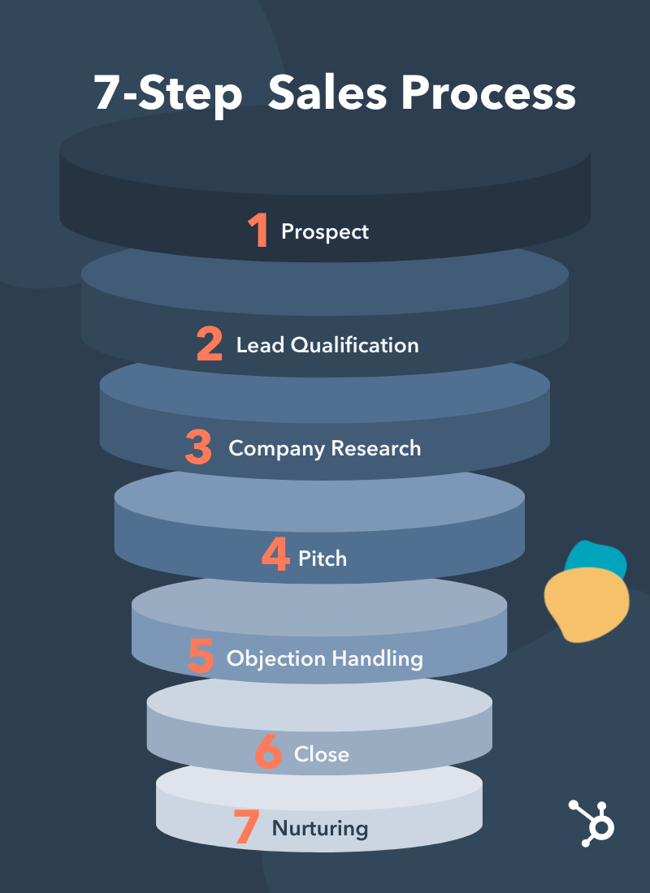
7 Step Sales Process
1. Prospect.
2. Connect and qualify leads.
3. Research the company.
4. Give an effective pitch.
5. Handle objections.
6. Close the deal.
7. Nurture and continue to sell.
How to Improve Your Sales Process
1. Analyze your current sales process.
2. Outline the buyer's journey for your target persona.
Featured Resource: Buyer Persona Templates
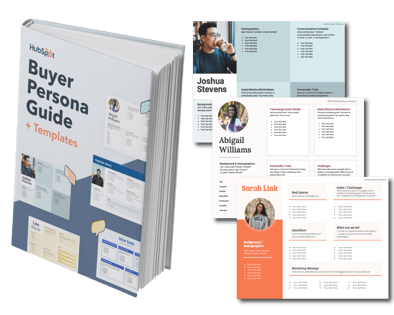
3. Define the prospect action that moves them to the next stage.
4. Define exit criteria for each step of the sales process.
5. Measure your sales process results.
Level 1: Humming
Level 2: Experimenting
Step 3: Thrashing
How to Create a Sales Process
Recommended Resource: Free Sales Plan Template
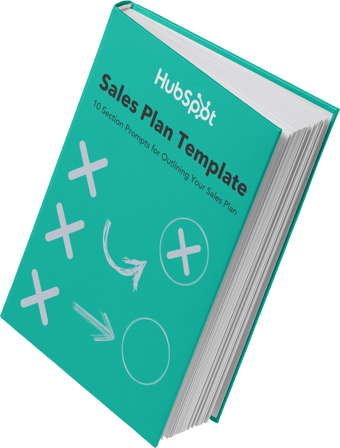
1. Start at the end.
2. Bring all stakeholders aboard.
3. Outline the sales process steps.
.png?width=650&name=On-Brand%20Image%20Template%20(1).png)
4. Map the buyer's journey.
.png?width=650&name=On-Brand%20Image%20Template%20(2).png)
5. Implement changes, test, and measure.
Sales Process Flowchart
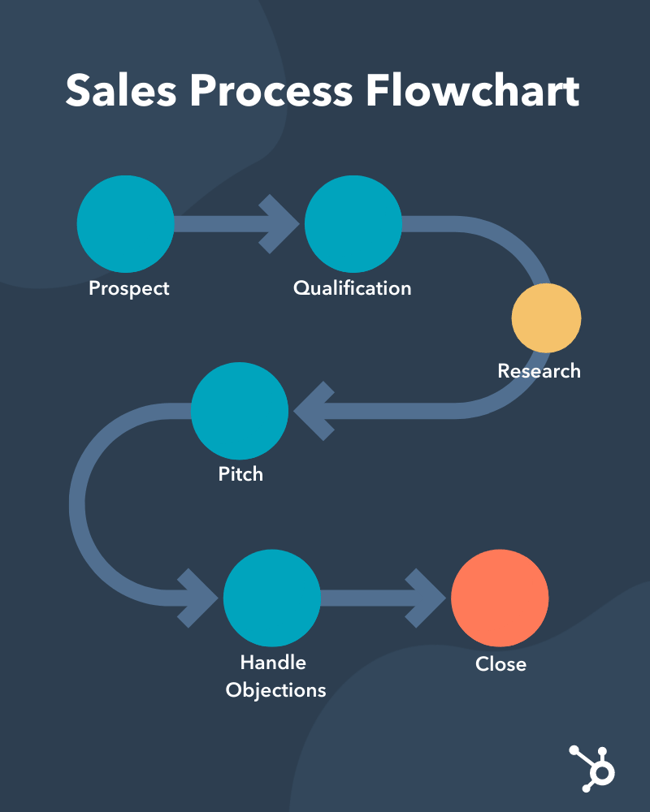
Sales Process vs. Sales Methodology
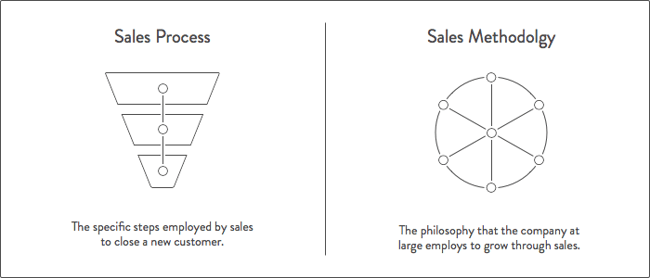
Sales Methodologies
1. Challenger Sales Methodology
2. Solution Selling
3. The Sandler Selling System
4. Consultative Selling
5. Inbound Selling
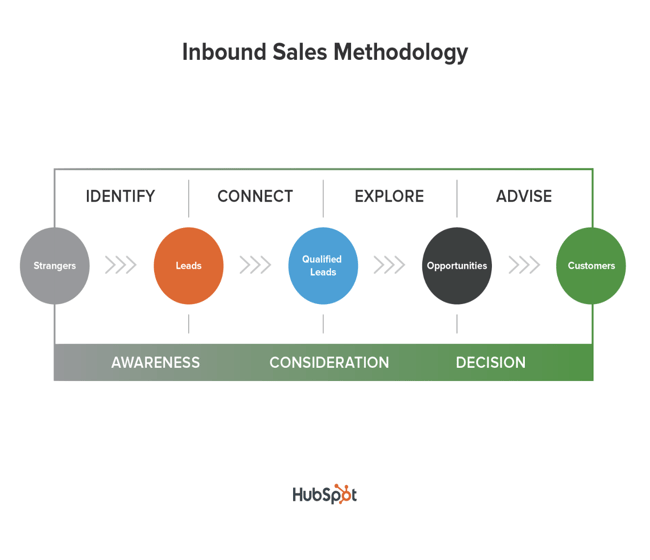
Common Sales Process Mistakes
1. Leaving Sales Process Steps Open to Interpretation
2. Expecting One Sales Methodology to Be the "Silver Bullet"
3. Forgetting Your Sales Process Will Always be a Work in Progress
4. Not Aligning Your Sales Plays with Your Sales Process
5. Leaving Marketing Out of the Loop
6. Centering the Process on Closing Deals
7. Forgetting to Measure KPIs
Dive Into Your Sales Process to Grow Better


Originally published Jun 22, 2021 1:15:00 PM, updated November 08 2021
Give Me Your Sales Process on How You Transition Into Sample Conversation to Selling a Product?
Source: https://blog.hubspot.com/sales/sales-process-